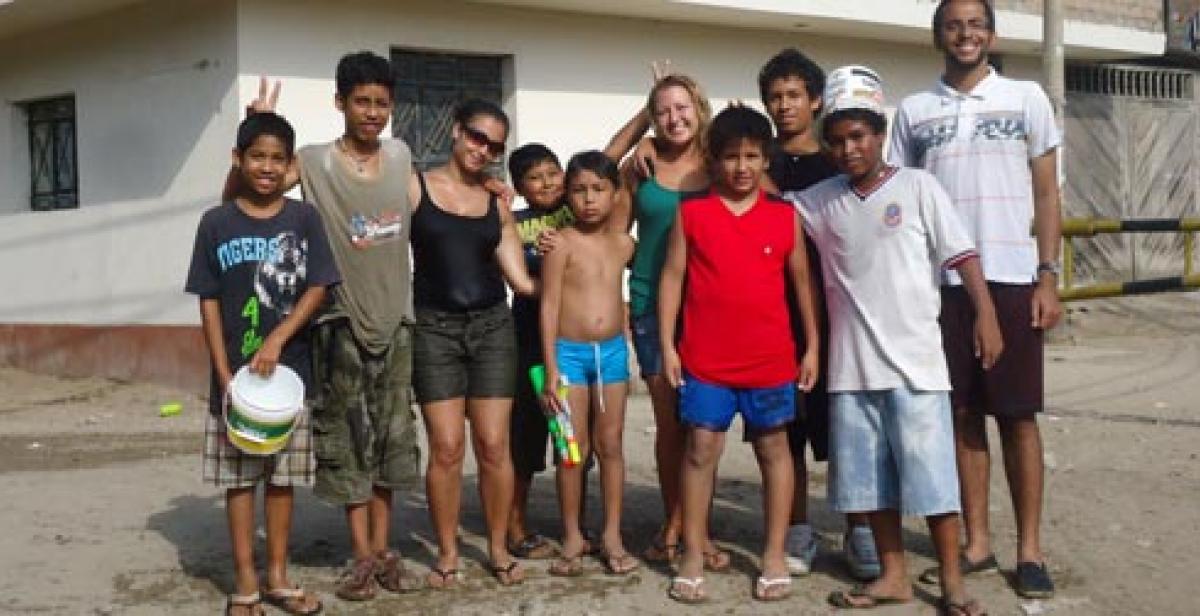Brazil celebrates with music, Trinidad with dance and exquisite costume. In Peru, Carnival is celebrated with life’s purest gift – water. Traditionally around the world, Carnival is a festivity used to mark the last few days before the Lenten season in the Christian calendar. In Peru, however, an entire month’s worth of celebrations is dedicated to Carnival.
Water fights
Throughout the month of February, Peruvians celebrate Carnival with water fights. If Ash Wednesday (a day in the Christian calendar that marks the beginning of the Lenten season) falls as late as March, then the festivities can even continue beyond February until this date. Typically on Sundays the tradition is upheld, though water fights are known to take place throughout the week during this time.

Water fights occur in the streets of the district of Lima. Often young people play with water balloons and water guns. In the scorching summer heat, it can be a recreational way to simply cool down. Between friends, family and local communities who have given their consent to partake in the fun, it is a playful way to rejoice before Lent.
Not a simple issue
A problem that can occur with water fights is when unconsenting members of the public can be attacked. More recently, the government have created laws to make it illegal to attack passers-by with water in the streets. There is a grey area around this issue as it is still permitted to celebrate carnival with water fights in the vicinity of your own home or when permission is granted among participants. Even when consent is given, many members of the community speak out against the tradition and would encourage young people to refrain from such celebrations.
Carnival can even be used an excuse for violence in Peru. In Villa El Salvador, it is suspected that young groups of gangs use it as an opportunity to commit more violent crimes. A tradition that once involved throwing water can now include throwing dirty water, oil and mud. In more extreme cases gangs take part in fights, theft, vandalising private property and sexually assaulting females.
Water scarcity
Another major concern about the celebration of Carnival within the district of Lima is the use of water – an element still scarce in many areas. In Villa El Salvador, an area that is essentially a desert, safe water is particularly sparse. Many homes in the poorer sectors do not have access to clean running water. Water is instead distributed via trucks to the areas, often at a more expensive price due to the costs and additional inconvenience of delivery. In an area where water is both limited and costly, it seems strange that it is a tradition to use it in such a casual way during Carnival. When speaking to local people in Villa El Salvador, it is common to find that many of the younger generations are not even entirely sure what the significance of using water is during Carnival.
Water is not used everywhere in Peru for Carnival festivities. In the region of Ica, for example, water is in such demand that celebrating Carnival with water fights is a tradition that is no longer observed. In Cajamarca, Peruvians dance around an ‘unhsa’ or ‘yunsa', a tree decorated with anything from ribbons, fruits, balloons and even bottles of alcohol. The ‘unsha’ is eventually cut down and the people rush to collect the prizes that it was decorated with. In the city of Juliaca, a traditional way to celebrate Carnival is with the ‘Morenada’ dance.
The importance of tradition
With laws being enforced to control the violence that Carnival can lead to and water shortages on the rise in Peru, the future of this particular tradition of Carnival is uncertain. Due to the growing concerns about the violence that water fights can lead to, even consented water fights can be discouraged in public places.
Tradition is something of the utmost importance in Peru and to see a once harmless and popular tradition fade out is saddening. As time goes on, fewer generations appear to be aware of the significance of using water in the festivities, questioning why it is a particular tradition that needs to be upheld in parts of Peru. More responsible celebrations of Carnival can and should be encouraged. Water can still be the focus of the festival without it being used in a wasteful way.
In essence, the spirit of Carnival is to rejoice, commemorate and indulge before a season of fasting and self denial of luxuries. Water is, sadly, a luxury for many people in Peru, however, it is not these people that appear to be indulging in it for Carnival.
By ICS volunteer Meryl Noronha. Photos are of ICS volunteers and local people in the streets of Villa El Salvador in Lima, Peru.




Comments
A very thoughtful article
A very thoughtful article Meryl. I think things that keep peoples spirits up and bring joy are very important, and in the UK I think we've largely lost the sense of meaning behind some of our seasonal celebrations. The challenge is how Peruvians in places like Villa El Salvador can, as you say, "keep water as the focus of the festival without it being used in a wasteful way."